When it is time to buy a new flash, many people ask themselves similar questions. Should I go for a high-end unit? Will a mid-range flash be enough for me? How many extra features do I get for the extra money I spend? If you are a Nikon user, this article will help you answer these questions.
Nikon Speedlight SB-900 and Nikon Speedlight SB-700 are the Nikon's best flash guns at the moment. SB-900 is the flagship, and SB-700 is a mid-range flash. They are both loaded with features but differ quite noticeably in functionality and price.
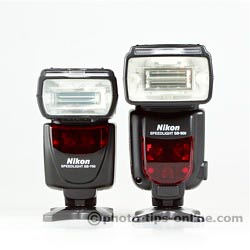 |
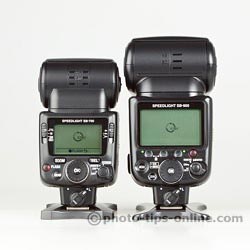 |
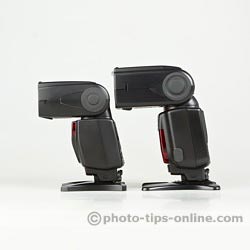 |
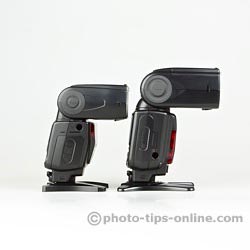 |
First and foremost difference to consider is the maximum light output. There is no such a thing as a too powerful flash. Nikon SB-900 has a Guide Number of 34m/111.5ft, whereas Nikon SB-700 is rated at 28m/92ft (ISO 100, at 35 mm). This means that the flagship unit is about 48 percent more powerful, which is in-between 1/2 and 2/3 of an f-stop. This might not seems like a lot, but when you use flash diffusers, you often need all the power you can get.
Nikon SB-700 and SB-900 have many things in common in terms of the overall design. Their quality and materials used are very similar, if not identical. Both units feel solid and well-built.
Obviously enough, Nikon Speedlight SB-700 is smaller and lighter: 360g (12.7oz) vs. 415g (14.6oz) of SB-900.
Both flashes features a built-in catchlight (bounce) card and a full 360 degree rotating head (0, 30, 60, 90, 120, 150, and 180 degrees to the left and right). Nikon SB-700, however, offers two more angles and can also be set to 75 degrees left and right. It's a minor difference, but it gives you a little bit more flexibility. The tilting angles are the same: -7, 0, 45, 60, 75, and 90 degrees.
Both Nikon Speedlights have a mounting foot with a metal plate for durability and can be used with optional Water Guard accessories when you want to protect the contacts from water.
The battery compartments are laid out differently, but both are functionally the same, and they are easy to open/close and find the right battery polarity.
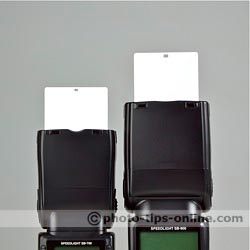 |
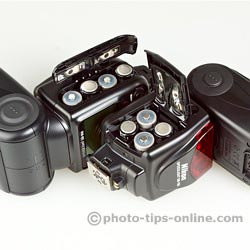 |
SB-700 and SB-900 both have good ergonomics. The tactile feedback of the buttons is good. Both units have select dial, which is great for navigating menus and is typically found on the higher end models. There is a four-state switch to go between ON, OFF, MASTER, and REMOTE modes. All controls are reasonably sized and placed.
Nevertheless, we found that Speedlight SB-700 is slightly better with the regards to controls due to a number of factors described below.
SB-700 features a dedicated illumination pattern switch. With SB-900, you have to go through menus to set the illumination pattern.
SB-900 has three function buttons that change the functions they perform depending on the state of the flash . All of the SB-700 buttons always serve a unique purpose, which is generally easier to use.
The Custom Function menu can be directly accessed on SB-700 with the Menu button, whereas on SB-900, you have to hold the OK button down for one second to get to the custom settings.
The button backlight of SB-700 is also slightly better, since it's brighter and easier to see under dim light conditions.
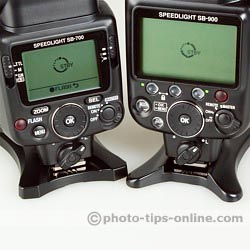 |
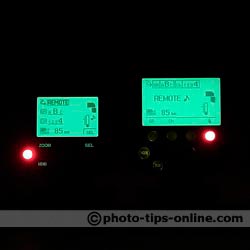 |
Please note that most of the advantages listed above are due to the fact that SB-700 provides less functionality, so access to the features is more streamlined.
Nikon Speedlight SB-900 offers more flash modes compared to its little brother. SB-700 supports iTTL, iTTL-BL, Manual, and Distance-Priority Manual modes, while SB-900 also has Repeating (stroboscopic) flash mode and four Auto flash mode variations, which includes Auto Aperture with modeling illumination, Auto Aperture without modeling illumination, Non-TTL Auto with modeling illumination, and Non-TTL Auto without modeling illumination.
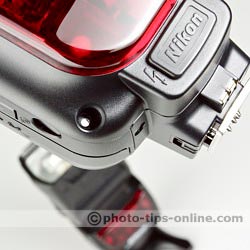 |
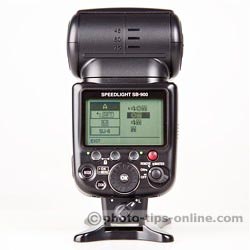 |
Also, SB-700 cannot be directly set to iTTL Standard or BL modes. One of the modes is selected automatically based on the camera metering settings: i-TTL BL is used when camera metering mode is set to matrix or center-weighted; standard i-TTL is activated when the camera is switched to spot metering. This is not necessarily a disadvantage, but some photographers may prefer having a direct control over this kind of settings.
The following images show examples of both flashes set to identical settings in different modes.
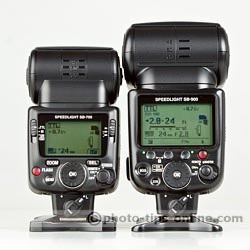 |
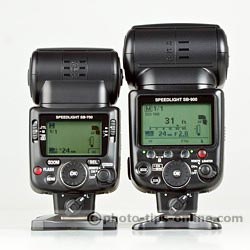 |
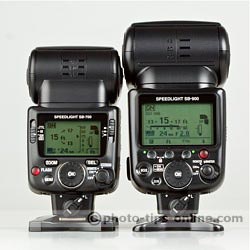 |
Unlike many other mid-range flash guns, Nikon Speedlight SB-700 can serve as a wireless master unit controlling other flashes within Nikon Creative Lighting System. It is limited, however, compared to the flagship unit as outlined below:
Please note that both flashes support all four Nikon wireless channels.
While SB-900 is a superior model when it comes to wireless control, the smaller SB-700 delivers the essentials that might suffices for a large number of users. On top of that, it features a Quick Wireless Control Mode that cannot be found on SB-900. In the Quick Control Mode, the master flash does not fire and the ratio between the two remote flash groups is conveniently controlled with the dial. We found this new "bonus" feature to be quite useful.
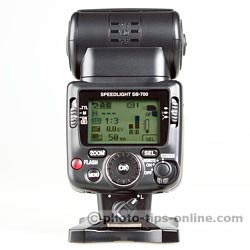 |
Both flashes have a built-in protection from overheating when firing in rapid successions. Nikon SB-700, however, seems to be less prone to overheating. For detailed test results, please refer to Nikon Speedlight SB-700 vs. SB-900: overheating (thermal cut-out) test.
Color gels (or filters) are used to match the color temperature of your flash to the available light and for artistic lighting effects. For basic color correction both, Speedlight SB-700 and Speedlight SB-900, come with a small set of filters. SB-700 comes with two filters to match fluorescent and incandescent light. SB-900 comes with four ones: two for fluorescent and two for incandescent light situation (the variations of the same type filters provide different degree compensation effect). You can also buy additional filters from Nikon or try any of the aftermarket solutions, like Honl Photo Gels or Rogue Filters.
SB-900 comes with a plastic filter holder and colored film inserts, whereas the filter of SB-700 are made of hard plastic. We prefer the hard filters of SB-700 as they are easier to change, but they also take a little more of the storage space.
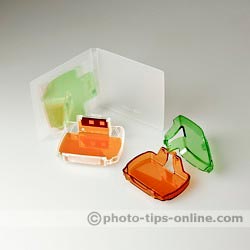 |
Both flashes automatically recognize the installed filters and communicate that to the camera via the hot shoe so that the camera can make white balance adjustments. Note that the following cameras are not equipped with filter detection, and with them, you have to set the right white balance manually: D2 series, D1 series, D200, D100, D80, D70 series, D60, D50, and D40 series.
The following image shows filter sensor of Nikon SB-700 (left) and Nikon SB-900 (right).
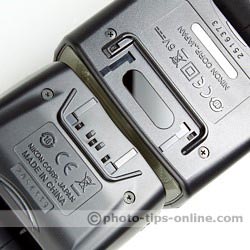 |
Being a top-end flash gun, Nikon Speedlight SB-900 has a number of features (not yet mentioned) that are missing on SB-700.
Because SB-900 has a longer flash head, it is capable of producing a narrower light beam. Thus, its telephoto range goes up to 200mm, while SB-700 stops at 120mm.
SB-900 has a connector on the front of the body that allows you to use an external power pack for increased number of flashes and shorter recycling times.
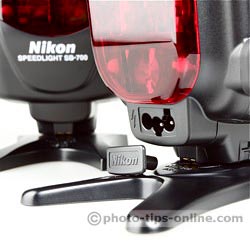 |
SB-900 carries a PC sync terminal that allows you to use it with various radio triggers without an additional hot-shoe adapter.
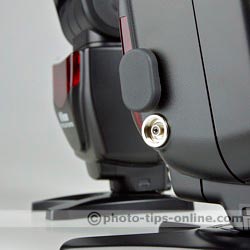 |
Another handy feature unique to SB-900 is the ability to create a custom menu on your flash for speedy access to the menu items you frequently use in your workflow.
All control buttons on SB-900 can be locked to prevent them from being pressed accidentally. This can be a valuable feature in some situation.
SB-900 can be configured so that AF-assist illuminator fires, but the flash itself does not fire. Also, the standby feature can be set to up to 300 seconds delay (compared to 40 seconds maximum of SB-700) and can be turned off completely.
These two Nikon flashes have quite a few custom settings. While a large number of them overlap, both unit have unique functions that are not present on the other flash. Below are the list of such settings (each setting can be set to two or more values).
SB-700 and SB-900 Speedlights come with durable carrying cases, flash stands, and diffusion domes. They are different, but none of them are really better or worse. The images below show the differences.
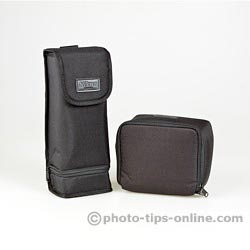 |
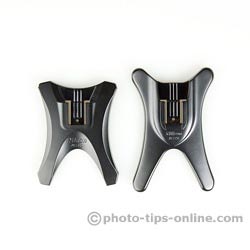 |
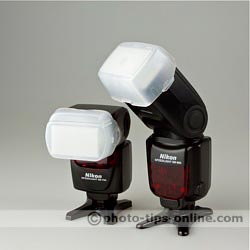 |
Both Nikon Speedlight SB-700 and Nikon Speedlight SB-900 are top-quality flash guns. They each offer an impressive set of features. Is the flagship model worth the extra money? It all depends on your personal use of the flashes. If you need an extra kick in the light output and the ability to use an external power pack for rapid firing, or can put to a good use things like extended zoom range, sync terminal, extra wireless functions and firing modes, then SB-900 might be a flash for you. Otherwise, you may want to consider going for the more compact SB-700 and save about 40 percent of the cash.